These Words Have Lost Their Meaning
Horacio Hospedales
2020
Grayscale charcoal, pencil, gessoand varnish
60 x 60”
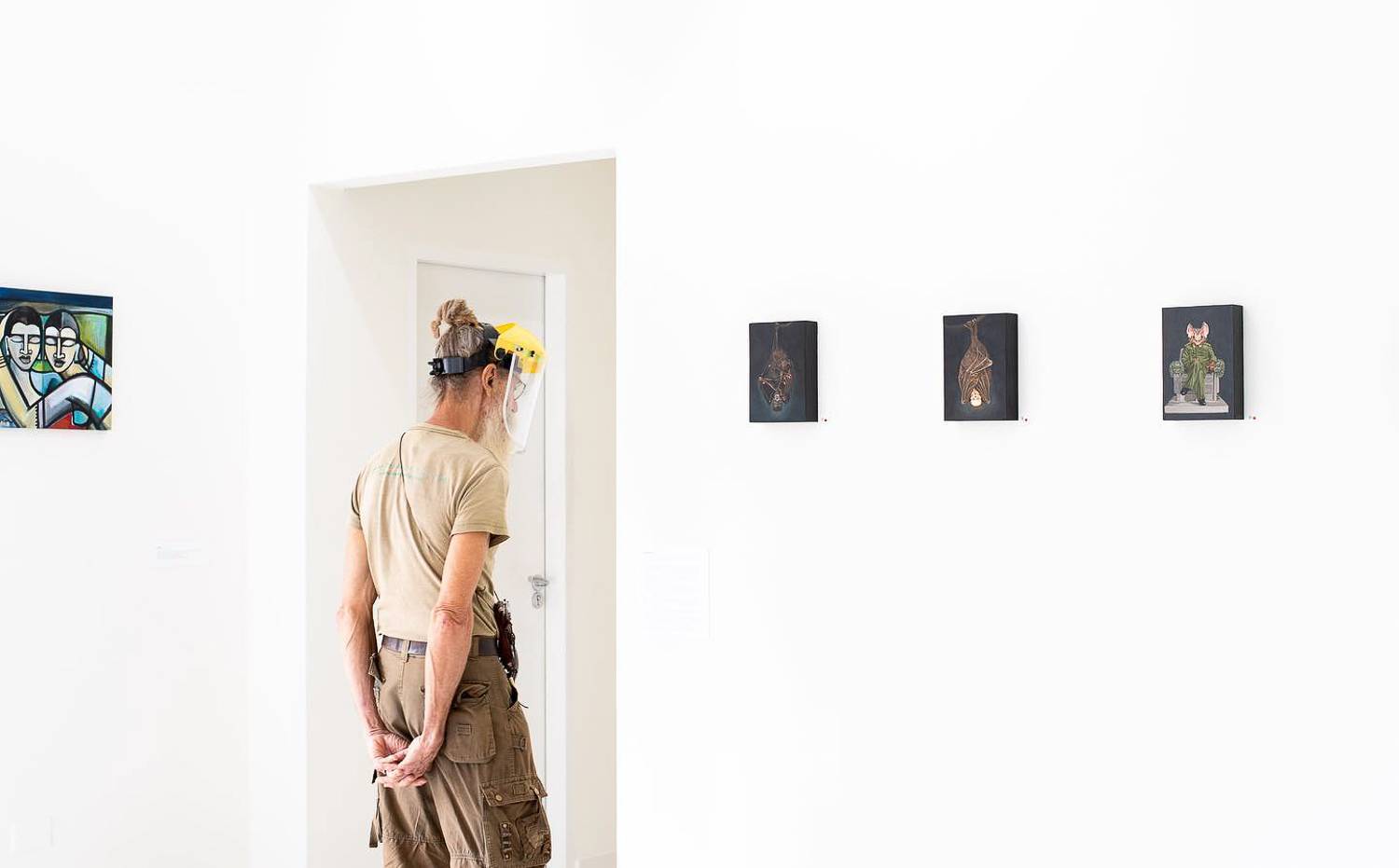
Horacio Hospedales
2020
Grayscale charcoal, pencil, gessoand varnish
60 x 60”
Sonya Sanchez Arias
(Urban Angel #1)
2019
Mixed Media Assemblage
Materials: Recycled wicker chair seat and table top rewired to make a large disk, 300 plastic forks, 1200 curled plastic fork tines, 700 yards of red hand-pulled string.
90” x 22” x 7”
Roberta Stoddart
2020
Oil paint on primed hard- board and stretcher bar.
9 x 6”
Roberta Stoddart
2020
Oil paint on primed hard- board and stretcher bar.
9 x 6”
Roberta Stoddart
2020
Oil paint on primed hard- board and stretcher bar.
9 x 6”
Roberta Stoddart
2020
Oil paint on primed hard- board and stretcher bar.
9 x 6”
Susan Dayal
2020
1 of 13 Hummingbird Sculptures
18 – 22 gauge galvanised wire, nylon fishing line, bamboo
Janice Derrick
2020
Earrings – Long, sterling silver with stud backs.
Janice Derrick
2020
Earrings – Long, sterling silver with stud backs.
Janice Derrick
2020
Chain . Sterling and oxidised silver circle and line links
Janice Derrick
2020
Chain . Sterling silver box chain with triple circle and line pendant
Janice Derrick
2020
Chain . Sterling silver box chain with single circle and line pendant
Dean Arlen
2020
Paper, wood glue, spray enamel, acrylic paint, epoxy, oil paint, graphite.
60 x 60” .
Born 1963, Eddie Bowen studied at Croydon College, UK from 1981-1985. He has since been living and working in Trinidad, often letting his environment in San Souci, be his muse.
Image by Melissa Miller
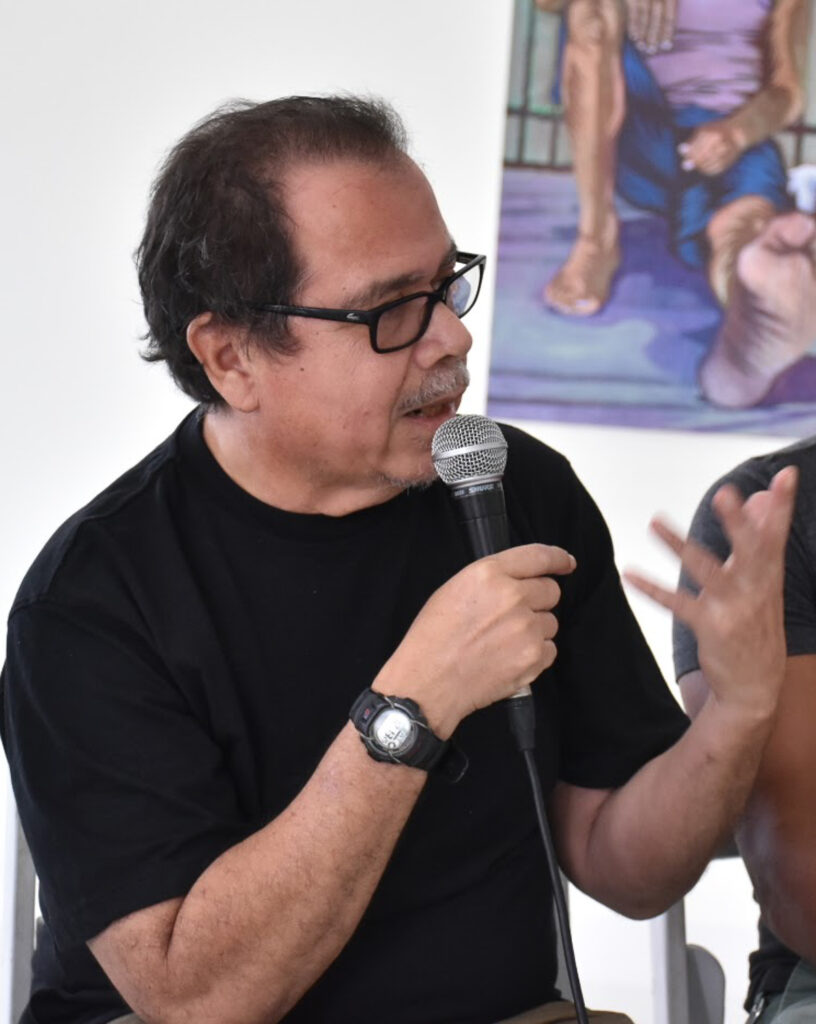
In the earliest world when all was dark, the bat was born. Half-bird, half-beast, this liminal, mysterious and erratic creature is somehow apart or in-between, and does not fit into the normal order of things.
From the dark underworld comes the bat, ambiguous mentor of the foreboding night, gliding to its banishment with supernatural trickery, magic, witchcraft, shape-shifting, malevolence, death, destruction and decay. Re- imagined as fiction- al characters in popular culture, this nocturnal animal becomes legions of versions of the evil vampire Count Dracula and the hero Batman.
Positively aligned in some cultures with happiness, longevity and good fortune, bats also present as sacred spirits – intuitive, watchful, wakeful, and vigilant. Imag- es of bats appear in Heraldic symbols, coats of arms and State insignias.
In the beginning, human beings and all living creatures existed together in har- mony, mutual respect and inter-dependence. Then humans disregarded animals’ rights, provoking their hostility. Human beings do not share the planet with ani- mals and with nature. Instead we dominate and inflict unimaginable suffering on most life forms and on each other, resulting in climate change and an alarming number of other escalating catastrophic events.
Man’s destructive environmental, ecological and lifestyle practices coupled with his invasion of animal territories, create Monster Mergers in which viruses invade human bodies as their hosts. Deadly diseases have been unlocked – more recently the 1918 Bird Flu Influenza, HIV/Aids, Sars, Mers and Swine Influenzas. Despite being generally beneficial to our planet’s ecosystems, bats are the most likely source of the novel Coronavirus. The highly mobile, social, and long-lived bat is a natural reservoir of many pathogens and is perfectly situated to spread disease.
The great Amazon Forest, often referred to as “the Lungs of the World”, is now being plundered and stripped of its resources at breakneck speed by corrupt political practices and big business. What new and as yet unknown diseases will be unlocked from the Amazon jungle?
The world has been forcibly brought to its knees by Covid-19. Surely, this is THE “opportunity of our lifetime” to change the way we live. But will we change? Or will we continue in our self-inflicted suffering towards early extinction?
-Roberta Stoddart
Image by Abigail Hadeed
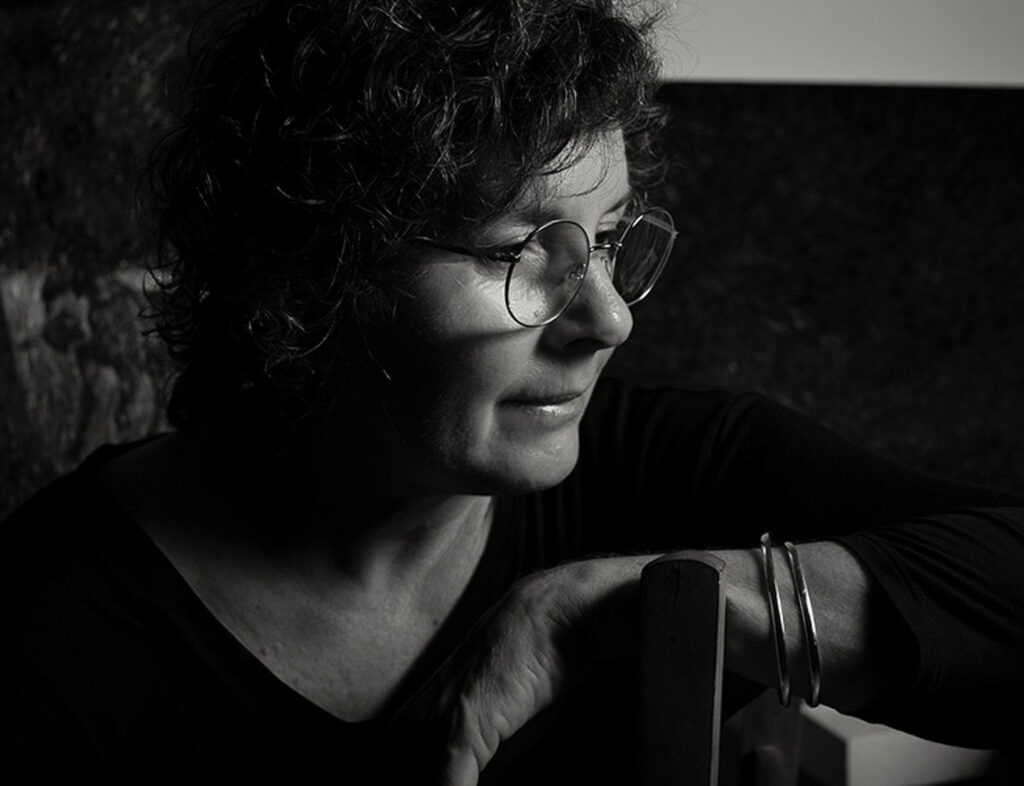
From Tacarigua to John Donaldson Technical Institute to UWI to Ontario College of Art and Design. From Jewellery to Visual Art to Installation Art… “My perception of visual art has evolved towards a performative act-tion within the political socio-economic life of the urban, the rural. A kind of schizophrenia within aesthetics, as I rethink the value of the studio and how the practice engages its space. There is a conscious consideration of art for tomorrow” – Dean Arlen
Image by Melissa Miller
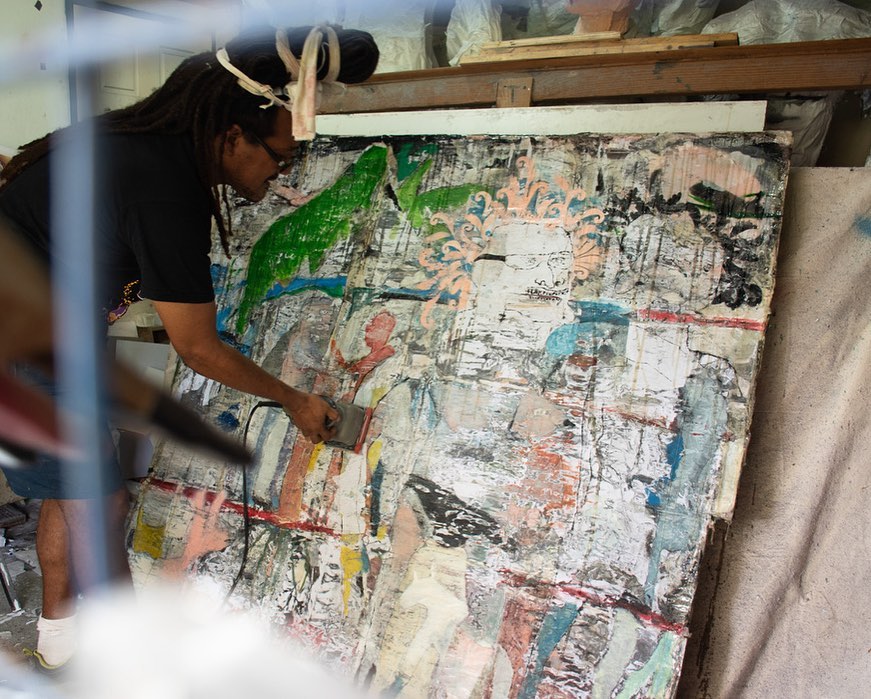
Horacio Hospedales is a Trinidad-born multi-media artist who has been practicing for twenty-five years. While exhibiting his fine art in Manhattan, he became a muralist and decorative painter working mainly on exclusive homes throughout New York, Connecticut and New Jersey in the USA. There was a break in his creative career when he returned to Trinidad in 2004 for family obligations but has returned to making since 2013.
Image by Melissa Miller
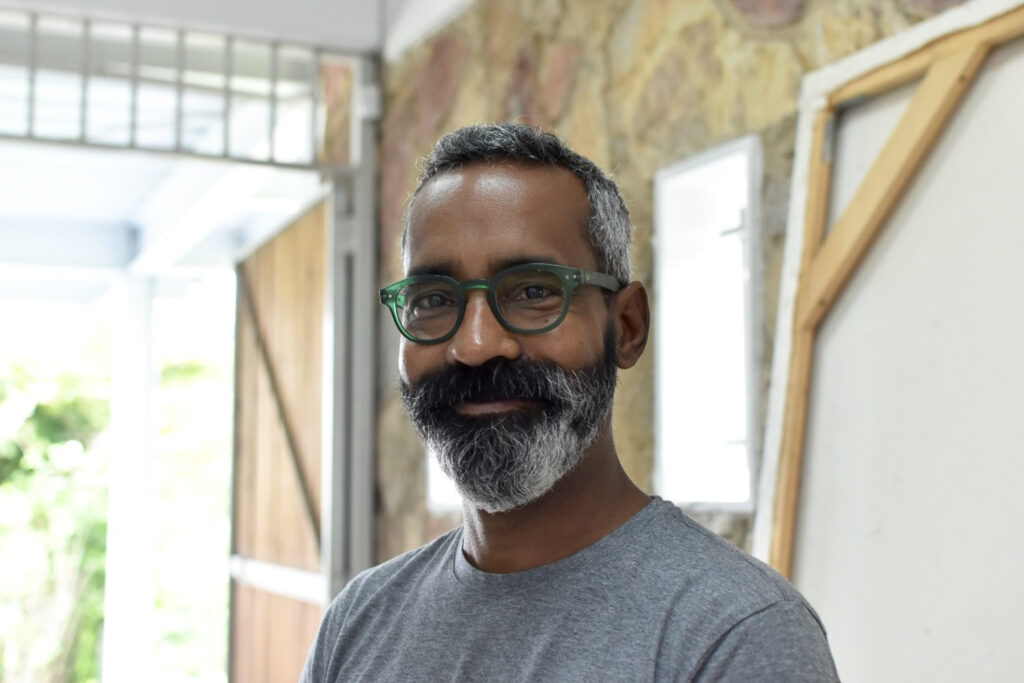
Born in 1965, Richard Ashraph Ramsaran is a conceptual artist from Trinidad and Tobago. He goes by the name Ashraph. His first solo exhibition was in 1991; several group and solo exhibitions followed over the years. In 2008, he held a conceptual show titled, “A Carnival Band” at the National Museum and Art Gallery. In Trinidad, he’s shown at Y Art Gallery: The Mask exhibition in 2013, and Black Indian in 2015, and at the Frame Shop: the Bat exhibition in 2014, and A sailor is a Sailor is a sailor in 2017. He has also exhibited in St. Lucia, Curaçao and London.
Image by Melissa Miller
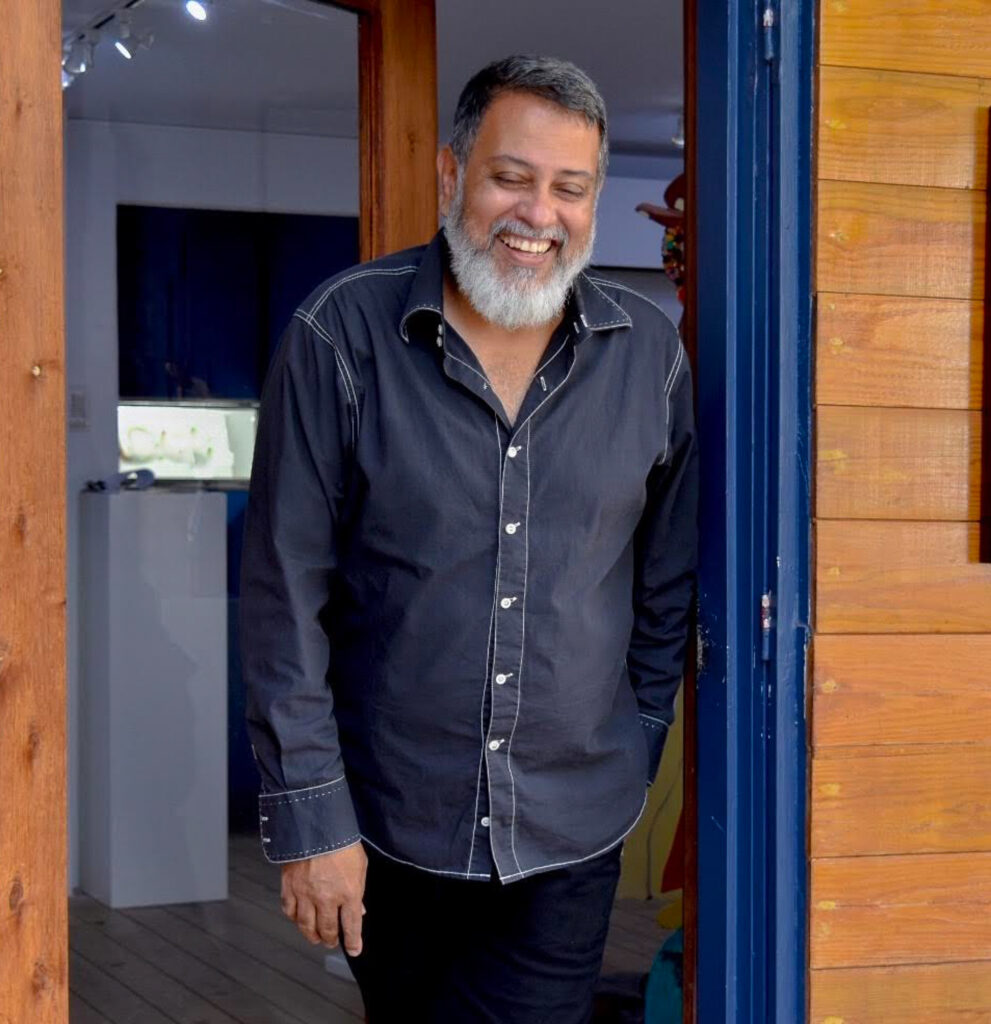
Jade Drakes is a Trinidadian craftsman with a fondness for all things craft and animal, especially the dog. She was born in Venezuela of Trinidadian and Italian parentage and moved to Trinidad at a very young age. In her early 20s, she set off to America to study stuff and work like a bitch. She studied Metalsmithing and Theatre at Slippery Rock University, where she learned to work with animal horn and bone under Professor Robert J. Bruya – ‘The Road Kill King’. She went on to study Bench Jewellery and Stone Setting at North Benet Street School. When the economy tanked, she went off to her father’s homeland to improve on her stone setting skills but instead found herself charmed by Alchimia, a contemporary jewellery school in Florence, where things were crazy (just the way she likes them). Jade draws her inspiration from nature, old shops that sell old things, old ladies, old men, museums, books – especially children’s books, female contemporary artists, insects and conversation.
Image by Melissa Miller
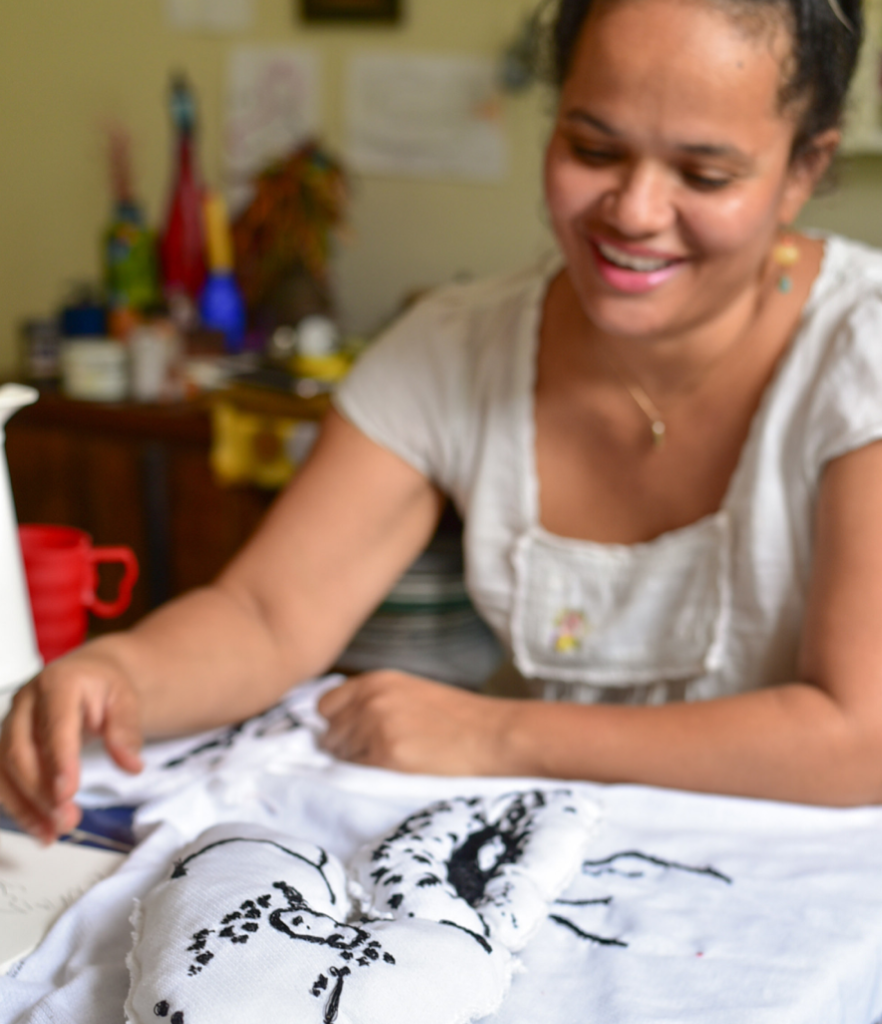
Born in Trinidad, Janice trained in Silversithing, Jewelry and allied crafts at London Guildhall University in the Uk. After graduating, Janice received a Clerkenwell Award from the Clerkenwell Green Association to set up her studio near the heart of London’s jewellery quarter, Hatton Garden. She ran her business in London for eight years before returning to Trinidad in 2005.
Over the last 25 years, Janice has exhibited her work in Germany, France, Ireland, the US, Trinidad, Japan and across the UK. Her pieces have been featured in Vogue (UK), Harpers and Queen, World of Interiors, The Sunday Times (UK), The Guardian (UK), Retail Jeweller magazine (UK), Instyle magazine (UK), The Evening Standard (UK), Time Out London, The Newsday (Trinidad), Trinidad Express, Trinidad Lookbook, 6 Carlos (Trinidad) as well as The Rings Book (UK, 2002), 1000 Rings (US, 2004) and The Contemporary Jewelry Exchange (Denmark, 2015).
She’s also exhibited with Y in the series of exhibitions: Jewelbox Light 2015, Jewelbox Spectrum 2016 , Jewelbox Dharma 2019, Raw 2020 and a solo exhibition titled Edges and Equilibrium in 2017.
She continues to develop her jewelry, inspired by simplicity, geometry and structure of manmade or natural forms.
Image by Melissa Miller
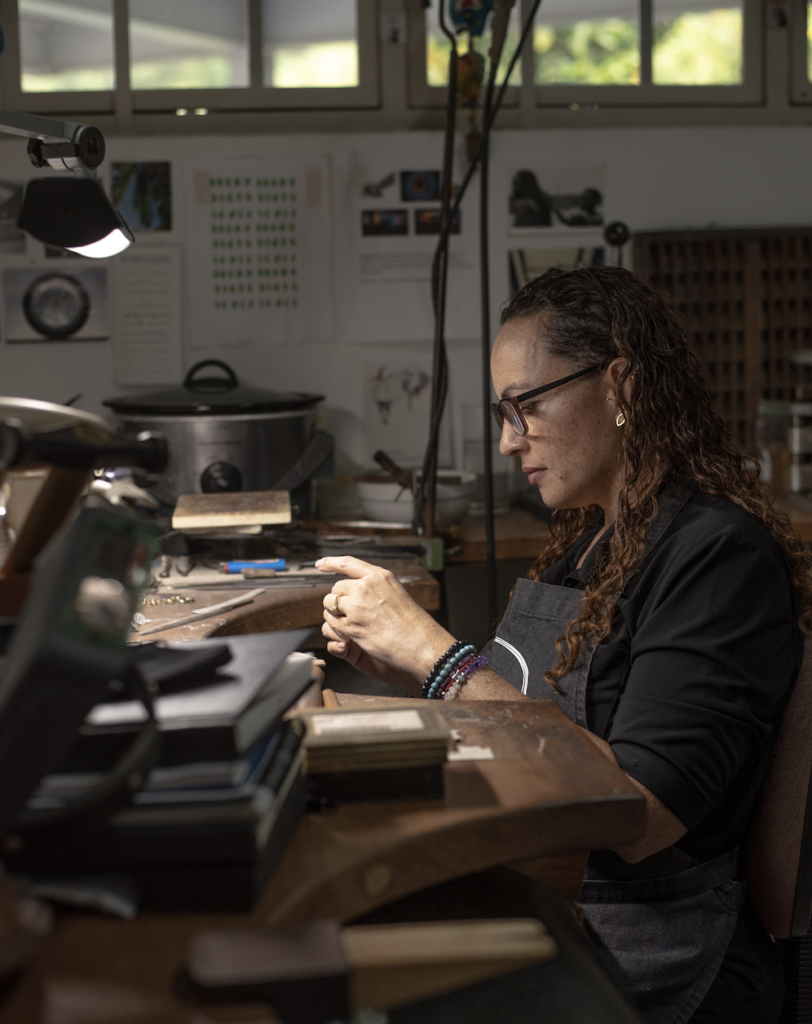
“Making art is personal and unique. It is a way for me to look within myself, take my experiences, enrich them by filling the cracks with memories and emotions, and channel them into my art. By exposing myself, and revisiting my experiences, I attempt to understand complex ideas, concepts of cause and effect, and in so doing, provide others with the opportunity to see me from the
“Inside Out”.
No one is born wearing a national flag, a religious symbol, or a socially constructed identity. We all come into life naked and, hopefully, screaming. However, as we move through life, we’re affected by the culture we live in, the politics and circumstances of our time and place, and the way we move through the world in reaction to these influential forces.
My pieces usually begin with a nagging thought usually instigated by current affairs or personal challenges. I certainly don’t pretend to have have any of the answers, but through a process of unearthing and experimentation, each new piece, helps me explore options for closure and creates a deeper, understanding of the topic at hand. Using discarded, recycled and alternative materials allows me to challenge the concept of beauty – for beauty to have meaning it often needs to have a flip side of darkness. One thing is certain, we all need to do our part and start thinking about the possibilities and potentials for alternative futures using materials that already exist all around us.
When I make a piece, I create something that didn’t exist before, whether it’s found objects transformed into a mixed media assemblage, a paper dress or Art jewelry made from recycled materials. I am always hopeful that through the process of excavation, discovery, transformation and exposure, my art connects people, bringing understanding and perspectives that have the potential to challenge norms expectations, thoughts and judgments.”
– Sonya Sanchez Arias
Image courtesy the Artist

Abigail Hadeed is a Trinidadian photographer and producer who has been documenting the Caribbean and the Americas for the past 30 years. She is synonymous with her black and white photographs of steelbands, traditional carnival, theatre, Caribbean descendants in Central America (Trees Without Roots, 2006), and the indigenous people of Guyana’s Rupununi savannah (Commonwealth Photographic Awards winner, 2004). Hadeed’s archives owe much to her uncanny ability to discover people and places at the crossroads of an unresolved past and an impending future, torn between pain and possibility, disquiet and hope. Her deeply felt images are the fusing of eye and instinct, a stalking through shadow and light of what can only be glimpsed. On permanent display at Light Work, Syracuse, NY, and featured at Biennials in São Paulo and Havana, Hadeed’s work appears most recently in Pictures from Paradise: A Survey of Contemporary Caribbean Photography.
